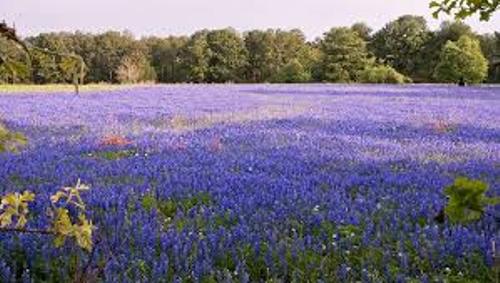10 Facts about Bluebonnets
The flower species included in the genus Lupinus is explained in Facts about Bluebonnets. This flower is called as the state flower of Texas. You can find them easily in the southwestern United States. There are several kinds of bluebonnet species. The plant is called bluebonnet for the petals on the flowers reminds you with the bonnet that the pioneer women wear. Get more interesting facts about bluebonnet below:
Facts about Bluebonnets 1: the species
There are several species of bluebonnets. Those include Lupinus argenteus, Lupinus plattensis, Lupinus texensis, Lupinus subcarnosus, Lupinus plattensis and Lupinus concinnus.
Facts about Bluebonnets 2: Lupinus texensis
The Texas bluebonnet or Texas lupine is the Lupinus texensis. The buffalo clover or sandyland bluebonnet is Lupinus subcarnosus.
Facts about Bluebonnets 3: the state flower of Texas
Lupinus subcarnosus was selected as the state flower of Texas on 7 March 1901. It was the only species selected as the state flower. However, in 1971, Lupinus texensis was included in the state flower of Texas because most Texas people were in favor with Lupinus texensis.
Facts about Bluebonnets 4: the common view of bluebonnets
During the spring season, it is very common to see the bluebonnet blooms along the Texas highways. The people who lived in Texas were encouraged by the Lady Bird Johnson to plant their native plants around the area.
Facts about Bluebonnets 5: the family photos
The backdrop of the beautiful bluebonnets along the Texas highways attracts so much attention from the driver and passengers. They will love to stop and take a family picture before the flowers. Check bluebell facts here.
Facts about Bluebonnets 6: Texas bluebonnet
Texas bluebonnet is the state flower of Texas. It has the gravel like seed. When it grows, many people find no scent. But some people smell the sickly sweet scent on Texas bluebonnet.
Facts about Bluebonnets 7: the wild bluebonnet
If you check out the wild bluebonnet, it has the pink, white or maroon colors.
Facts about Bluebonnets 8: Lupinus havardii
Lupinus havardii is often called Chisos bluebonnet or Big Bend bluebonnet. In January and June, this flower blooms.
Facts about Bluebonnets 9: Lupinus argenteus
The silver lupine has the scientific name Lupinus argenteus. This plant can be found in the southwestern Canadian provinces, western North America and Midwestern US. Get blueberries facts here.
Facts about Bluebonnets 10: the habitat of Lupinus argenteus
Lupinus argenteus can be found in forest, grassland and sagebrush.
Are you fascinated with facts about bluebonnets?








